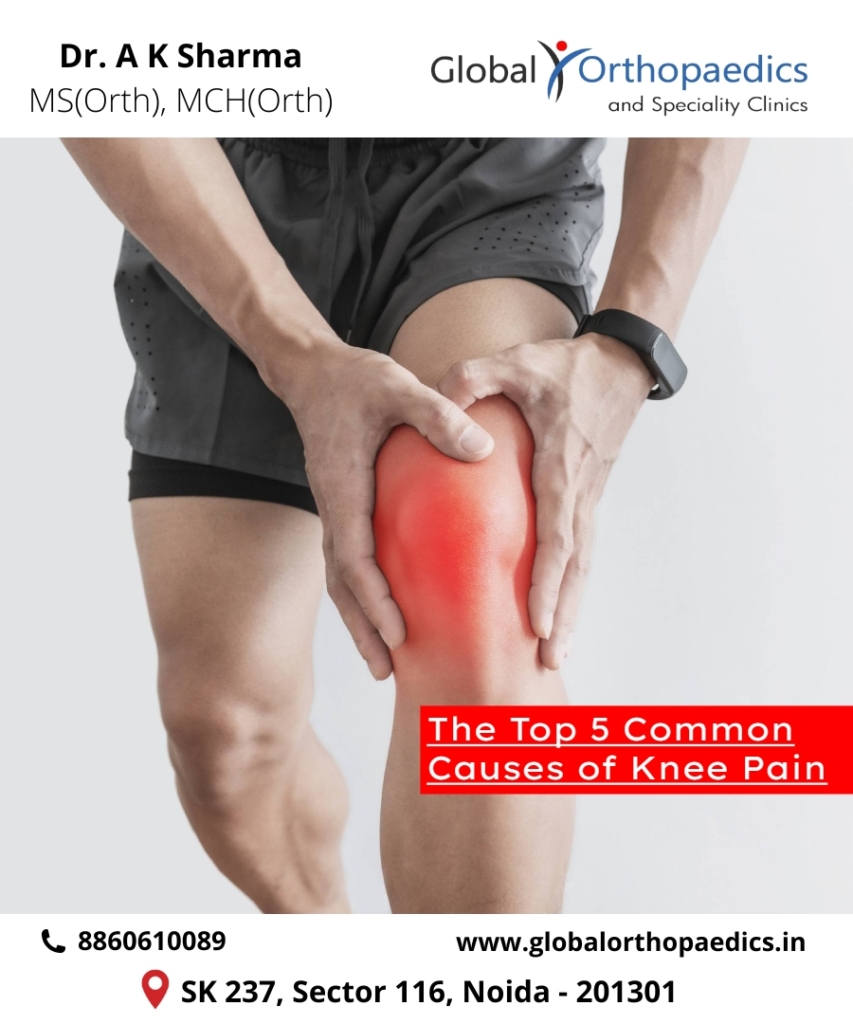The patella (kneecap), tibia (leg bone), and femur (thigh bone) form the knee joint. Two cushions called menisci and four ropes called ligaments that hold the bones together are positioned between the thigh and leg bones. In order to reduce friction as the bones move over one another, cartilage, a polish that is one centimeter thick, is also applied to the bony surfaces. Because walking depends on the knee, maintaining the joint’s health is essential for living an active lifestyle. Knee pain is a very prevalent ailment that can strike people of any age. The reasons, though, could differ for each. It’s critical to recognize the existence of an issue and to seek prompt resolution. Knee pain can often be attributed to degenerative or traumatizing injuries, depending on the etiology.

The five factors listed below by Dr. Ashok Kumar Sharma, Orthopaedic Surgeon at Global Orthopaedics and Speciality Clinics, could make knee issues worse.
- Age-related knee issues begin slowly as a minor ache that becomes worse over time and occasionally feels like the knee is sticking. One area of the knee or the entire knee may be the source of the discomfort. It is frequently linked to knee swelling brought on by friction from rubbing off the cartilage (polish). Depending on how bad the condition is, the course of treatment might range from simply taking medicine and draining the fluid from the knee to surgery.
- Pain resulting from an injury may originate in the ligaments, cushions, cartilage, or bones. An damage to the knee from a twisting, falling, or car accident occurs before such discomfort.
- Bony injuries or fractures hurt a lot and make it impossible for you to move or even keep the injured limb on the ground. Usually, they are accompanied with bone deformities and edema. Most of the time, an X-ray may clearly show a fracture, which can then be fixed with surgery or a plaster application.
- Sports injuries and falls from two-wheelers are the most common causes of ligament damage. They are first accompanied by discomfort and swelling, and a few weeks later, they may also create a sensation of instability in the knees and a sensation that they would twist again. These injuries require an MRI since they are not visible on an X-ray. Some ligaments self-heal effectively, whereas others don’t. The patient’s activity level, the number of damaged ligaments, and the presence of any concomitant injuries all influence the course of treatment. Most of these procedures are performed using an arthroscopic (keyhole) approach, and you will probably be released the same day as the procedure.
- Meniscus and cartilage injuries can occur separately or in conjunction with ligament injuries that share comparable causes of injury. These injuries result in pain and a locking sensation, or an abrupt inability to fully extend the knee. Meniscus injuries are treated using an arthroscopic keyhole method, which entails replacing or repairing a portion of it. The secret to successfully treating knee pain is prompt care from knee pain treatment centre in Noida, we have Dr. A K Sharma for problem related to every joint in the body.


